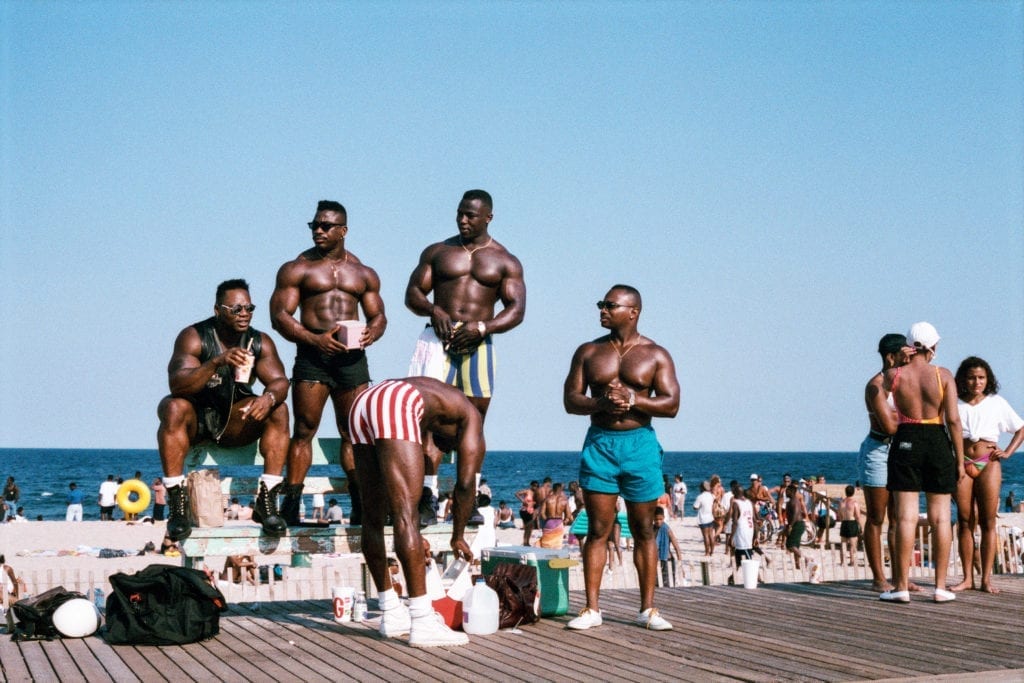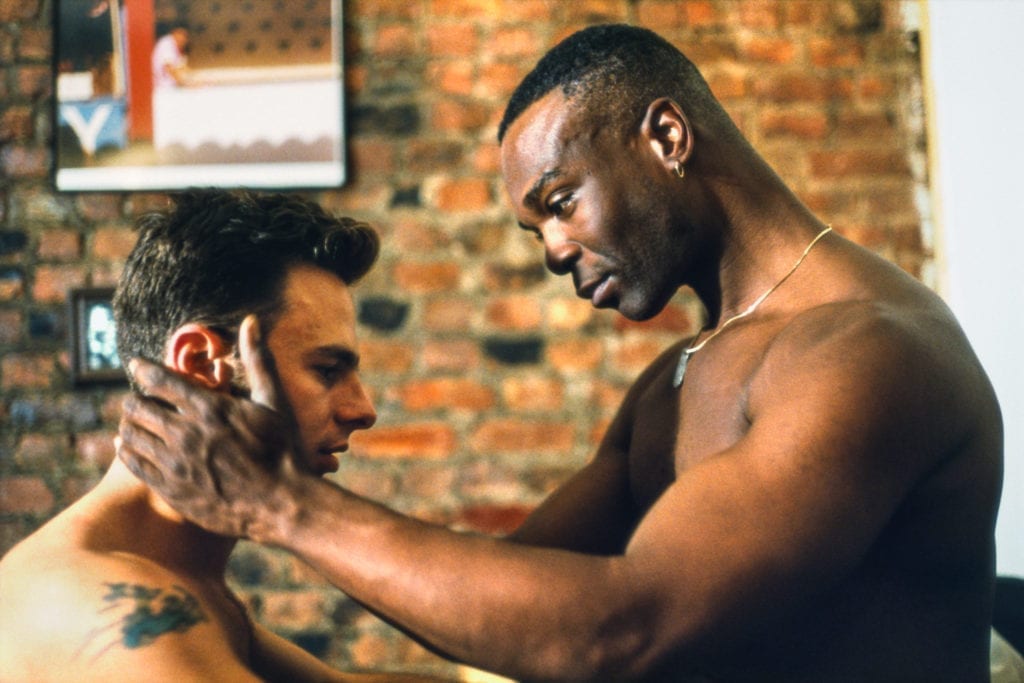Richard Renaldi’s photography career began with a passion for drawing. But, when his high school drawing class was full, he took photography instead; the rest is history. The medium has since become one of the great loves of his life and his vast archives have culminated in his most recent project: I Want Your Love. This new work charts the many challenges and triumphs of his life and is, in many ways, an extensive self-portrait.
Having always been interested in the humanist elements of photography, Renaldi’s earlier work is rooted in portraiture, and his desire to document the many facets of American society. His project, Touching Strangers, has become symbolic of our potential to get along, and involved Renaldi asking strangers to interact with each other physically while posing together for a portrait. We spoke to Renaldi about where the idea for this project came from, the value of this unique interaction, and how far photography can go to unify us all.
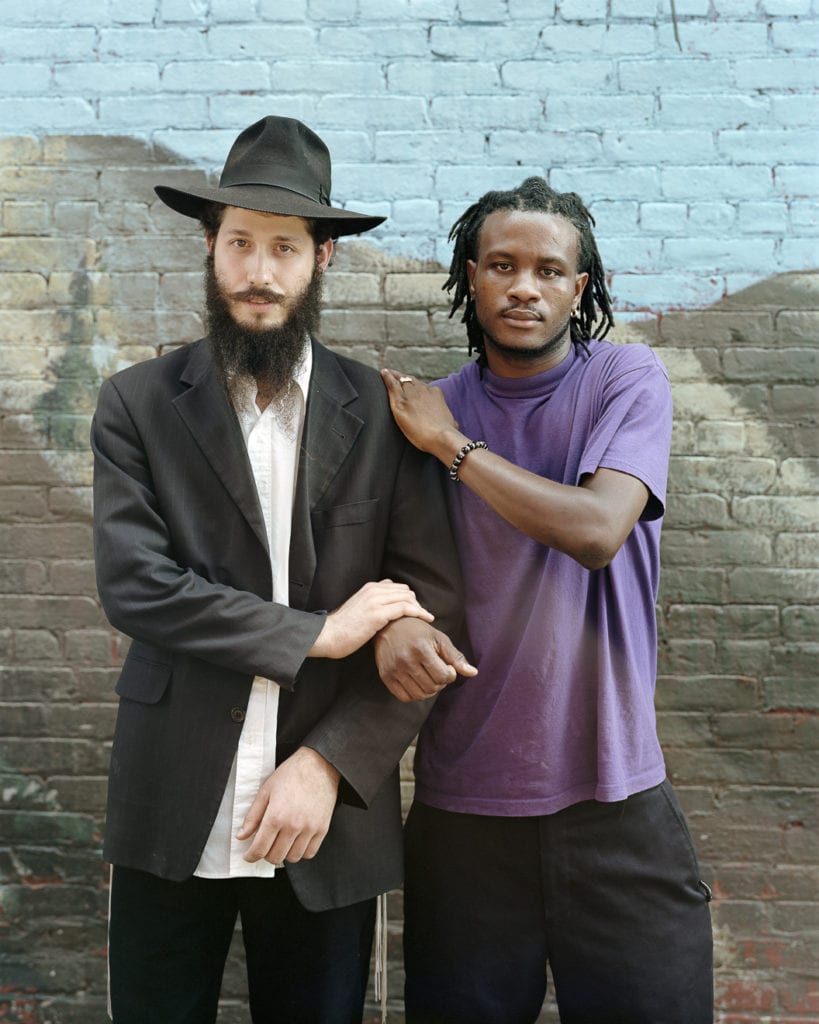
Where did the idea for Touching Strangers come from?
I was always interested in the dynamics of groups and group photography, and I used to think about how strangers in the city are bound to each other in a way, with a glue that is invisible, and I wanted to make it visible. When you see a group of people waiting to cross the street and they don’t know each other, for that moment they are together. I always thought there was some magic in that.
Then I began working on a project at bus stations across the country. And I was taking portraits of people in that transient space of waiting to go somewhere, in the middle of a journey, or just arriving. I met a couple and a young boy who were sharing a bench but were strangers to each other, so I approached them and asked them if they would mind being in the same picture together, even though they didn’t know each other. That was the moment when the lightbulb went off.
What was the most common reaction from the subjects you approached for Touching Strangers?
It really varied, some people were really enthusiastic and open, and some people were more reserved, suspicious, and needed convincing. Some people treated it more like a job. But almost all the time I found that people needed some encouragement and direction as to how to interact with the stranger I was pairing them with.
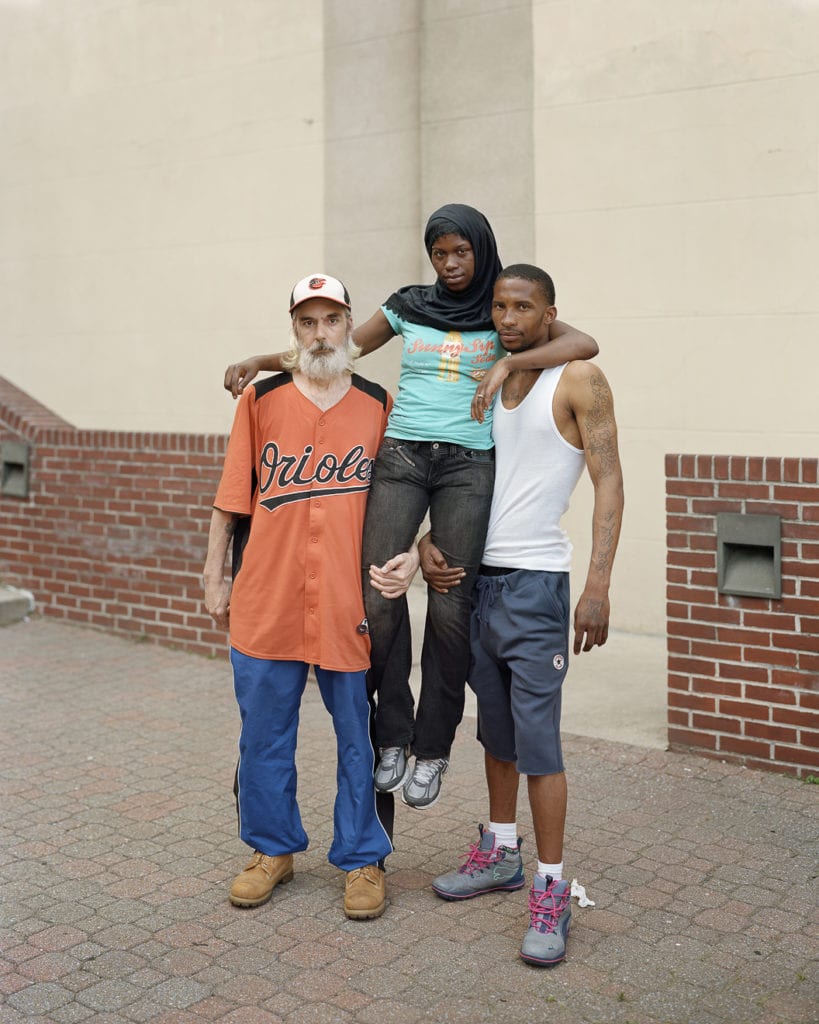
Did you generally pick your subjects based on how open they seemed, or based on people who looked interesting?
That evolved and changed as the project progressed. When I first took the photographs, it was all very experimental. As the project went on, I started thinking more about casting. I also started thinking more about the cataloging I was doing of different Americans; races, creeds, colours, and body sizes. I just tried to include as many scenarios and types of pairings as possible. I liked shooting people that looked like they belonged together, and people that seemed like they didn’t. I was interested in both, but some of the early photographs felt very stiff and uncomfortable.
Sometimes I think people misinterpret the work as only a message of ‘let’s get along’, but there are quite a few images that are more complicated, layered, and textured than just portraying that simple message.

Some of the images look very much like family portraits, and it’s hard to believe they are strangers. Have you always been interested in capturing these fleeting connections between people?
Engaging with strangers as a photographer is something I have done for most of my life now. I feel like those interactions are of value, but they are fleeting. I am very familiar with introducing myself and asking to collaborate on making someone’s portrait, and them sharing their time and image with me, but that’s it really. It’s a brief encounter, but it’s meaningful too.
I think Touching Strangers walks the line between fiction, staged photography, and documentary. Obviously, this meeting was all predicated on my introduction and my art making. But how those pictures are read becomes a product of the viewer. We bring things to that moment that may or may not have been there. It’s an interesting line to be on, because I don’t think much photography does that.
Do you think photography has the power to unify people and help us overcome our differences?
I’m not sure. These are pretty divided times we live in. Recently, when people saw a picture of a child on the Mexican/American border crying during her family separation, they were affected by those pictures, and were led to think differently about the situation. But I also tend to think people will see the stories they have been programmed to see.
There is a strong counter-narrative to the power of photography, which is human bias. I hope the power of truth, and the power of documentation, can help convince people to take action, but often when people are presented with the truth, they ignore it. I am scared about the times I am living in, but on the other hand, all we can do is we can try to put the truth out there and hope people see it.
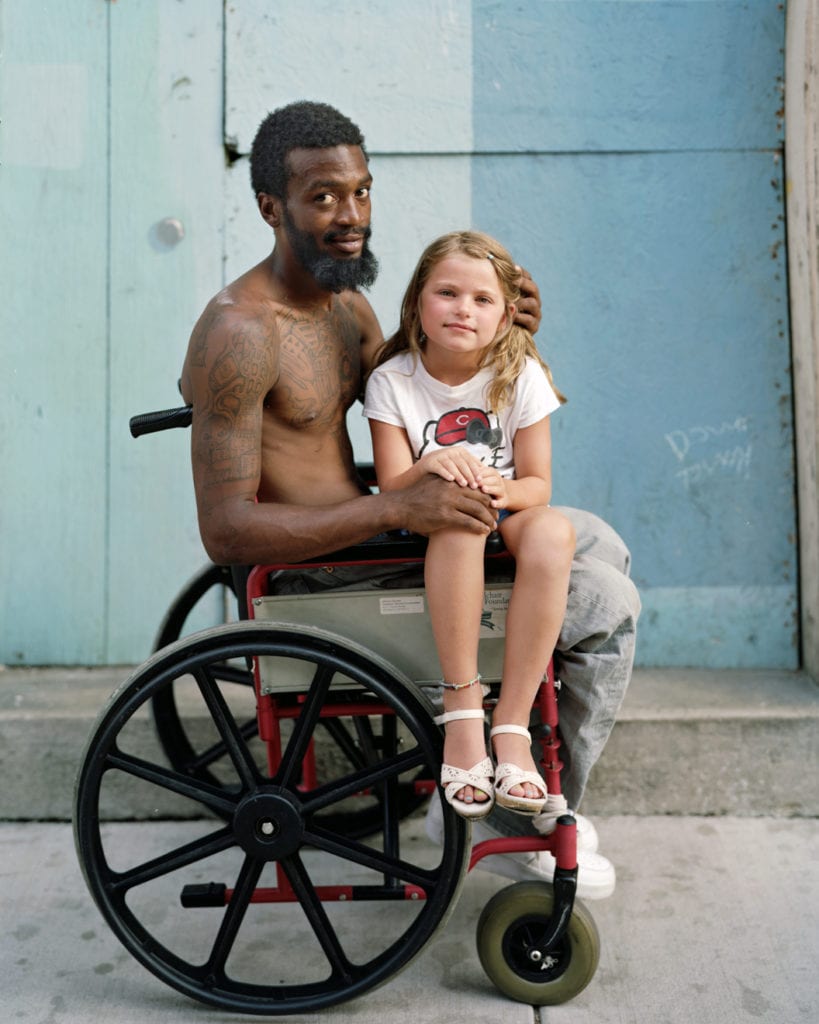
I Want Your Love is much more personal than any of your other projects. Did you feel nervous putting it out there, or were you ready to do it?
I was nervous. It was the hardest thing I have ever made, and I went deep into some of my stories and my past. I had to relive parts of my life and open them back up emotionally. That was really interesting and new for me, but I was not nervous about putting my story out there, because telling stories is what makes things interesting.
Do you have any advice for people wanting to get into portrait or street photography?
Just go and do it. If you have the desire to do something, the drive to do it should be enough. People worry so much about the final result that it can inhibit them from going out and taking the picture.
The one way to get better is to keep practicing over and over again, and to learn from your mistakes, and develop your own voice. Sometimes I think the answer is in the photographs you take. They can lead you to something new or something better. Instead of looking so much for an outside advice, the answer might be right there in what you have made.
Do you want to be part of the movement? Together, we will create a Portrait of Humanity

